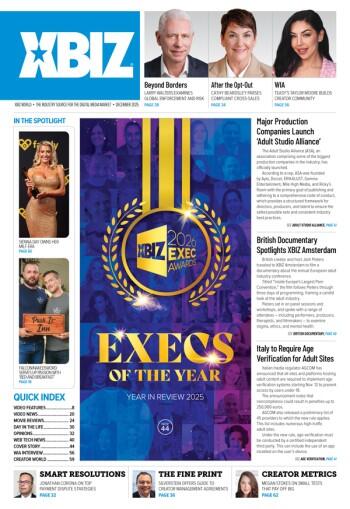Do you own too many domains? If so, you’re not alone.
Like other things we accumulate, every registered domain means something to us. Sometimes a domain represents a dream project we have always wanted to do but have never quite gotten around to. Yet we keep the dream alive by holding onto the associated domain in hopes that one day, it will come to fruition. Other times, we think a domain will appreciate in value and that our patience and original investment will finally pay off with a big sale and a fat profit.
Most domains are valuable only to the person who registered them. There are exceptions, but if you openly registered a domain and didn’t buy it from someone else, odds are you’re the only one who wants it.
The hard truth, unfortunately, is that there aren’t enough days in the week to do it all, so most of those pet projects will never actually materialize. As for making that speculative killing, very few domains ever turn out to be hot commodities.
So before you pull out that credit card and once again renew that domain that’s been gathering dust, let’s examine why people hold onto domains much longer than they should — and how to know when it’s time to let go.
Fear of Missing Out
A primary reason why people cling to domains is FOMO. If you think a particular domain is valuable, memorable or unique, the idea of losing it may trigger anxiety even if you don’t really need or want it. You might think, “What if I drop the domain and someone else buys it?” or “What if a competitor takes it?” Worries like these end up driving the decision to renew, rather than a more clear-headed assessment of your actual current needs.
Loss Aversion
As a rule, people are very good at acquiring more things but very bad at giving things up. This syndrome is called loss aversion. We don’t cope well with losing things, and take drastic steps to avoid it — including annually renewing domains we don’t need because we can’t bear to let them go.
Sunk Cost Fallacy
Bad decisions are also driven by the sunk cost fallacy, which drives people to invest more money into something simply because they’ve invested a significant amount into it already. This is also known as throwing good money after bad, and for good reason. It is the equivalent of doubling down on a bad poker hand after you are already in over your head. It prevents people from knowing when to cut their losses and move on. The sunk cost fallacy often leads people to renew “aged” domains they’ve held for years or purchased at high cost.
Inability to Admit Failure
Finally, the inability to admit failure is a significant driver of repeated bad decisions. Too often, we would rather keep banging our heads against the wall than admit that the wall is harder than our skulls. It can be hard to accept that what we thought was a worthwhile purchase of something valuable was in reality a waste of money. Human beings are very creative with how they justify their mistakes after the fact, but it is better to learn to accept failure than to compound it by desperately holding onto the notion that you were right.
The Truth About Domains
Yes, there are premium domains with high value, and they sell for big money. OpenAI recently purchased the domain chat.com. Since the company owns the artificial intelligence chatbot ChatGPT, the domain had obvious value for it. However, most domains are valuable only to the person who registered them. There are exceptions, but if you openly registered a domain and didn’t buy it from someone else, odds are you’re the only one who wants it.
Nevertheless, sellers routinely grossly overvalue their domains, giving rise to the standard joke amongst big-league domainers: “If you have to tell someone it’s a premium domain, then it’s not.”
Escrow.com facilitates online transactions of many kinds, including the buying and selling of domains. The site’s 2024 sales data shows the average price of two- and three-letter .com domain names is $60,000. Four- and five-letter .com domains average between $10,000 and $15,000 each, while six-character .com domains only come in at around $6,000. This data may shock sellers hoping to make much more money for much longer .coms and alternative TLDs.
Applying the 80/20 rule to these sales averages tells us that a handful of high-value domains will offset the far more numerous low-value domains of the same length. This means that most four- and five-letter domains are worth considerably less than $10,000, despite sellers often trying to sell longer nonpremium alt-domains for prices many times higher.
A Guide to Letting Go
Ask yourself this: Would someone else actually buy this domain? If your honest answer is no, then toss it. Anything that is an obscure extension, or that includes hyphens, random numbers or misspellings, should be at the top of the junk pile. Be a minimalist. A good rule of thumb is if you still haven’t used a domain you registered after three years, it’s time to let go. Try selling it, but if that doesn’t work, get rid of it.
Looking around the web, you’ll see that many good domains remain unused and for sale. It’s cheaper to acquire a good domain later, when you actually need it, than to hold onto dozens — or hundreds — of domains you think you “might” need one day. I’ve already canceled or earmarked over 200 domains to sell or drop in 2025, primarily from domain portfolios I acquired to get a few specific domains that were included.
If you need any more encouragement to make this the year you finally ditch your extra domains, maybe this will help: After dropping hundreds of domains over the years, I can’t recall a single one I tossed that later became a successful project for someone else. They usually remain unregistered, parked or for sale at an absurd price nobody will ever pay.
Juicy Jay is the CEO and founder of the JuicyAds advertising network and the Broker.xxx dealmaking platform, which helps people buy and sell adult websites, businesses and domains.







